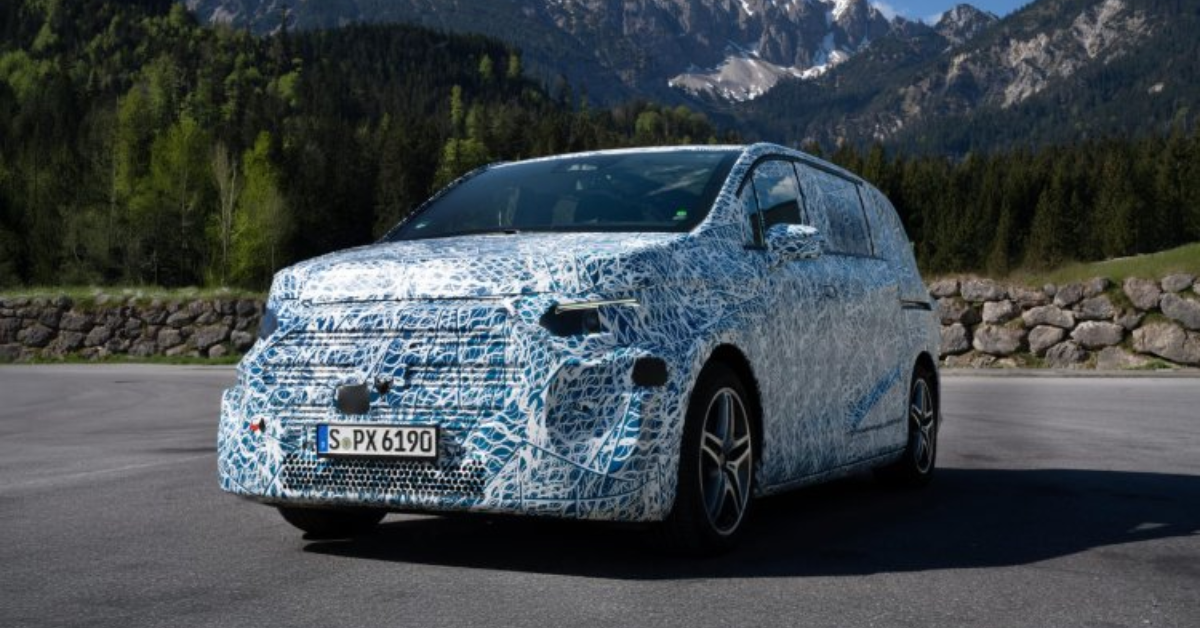In a bold demonstration of electric mobility’s growing practicality, Mercedes-Benz has successfully completed a 1,100 km journey to Rome in its all-electric VLE prototype, using just two quick charging sessions. This achievement marks a significant breakthrough in EV range, energy efficiency, and travel convenience — sending a strong message to skeptics who doubt the long-distance viability of electric vehicles.
Let’s take a closer look at this milestone journey and what it means for the future of electric mobility.
⚡ What is the Mercedes-Benz VLE?
The Mercedes-Benz VLE, believed to stand for Vision Long-range Electric, is a cutting-edge prototype developed to push the boundaries of battery efficiency, aerodynamics, and intelligent energy management.
Although not yet commercially available, the VLE represents the next generation of sustainable electric luxury travel — a blend of engineering precision, real-world usability, and long-range capability.
🚘 The Journey: From Stuttgart to Rome
The test involved a real-world road trip starting from Stuttgart, Germany, and ending in Rome, Italy — a distance of over 1,100 kilometers. The route included:
- Urban and rural roads
- Highway cruising
- Elevation changes through the Alps
- Variable temperatures and traffic conditions
What’s impressive is not just the distance, but the fact that it was completed with only two fast charging stops, showcasing the practical endurance of the VLE under dynamic driving conditions.
🔋 Only Two Quick Charging Stops – A Game-Changer
One of the biggest concerns around EV adoption is charging anxiety — the fear of long wait times, range limitations, and insufficient infrastructure. Mercedes-Benz tackled this head-on:
Charging Breakdown:
- First stop: ~450 km into the journey
- Second stop: ~850 km mark
- Both stops used high-capacity 350 kW fast chargers
- Total charging time: Under 45 minutes combined
This indicates the VLE’s highly efficient powertrain, optimized energy usage, and a battery pack capable of holding an extended charge even under varying terrain and speed conditions.
🔍 Technical Highlights of the VLE
Mercedes-Benz hasn’t released full specs, but based on the drive results and insider reports, here’s what the VLE is believed to feature:
- Battery Capacity: ~110 kWh
- Range (WLTP Estimate): Over 1,200 km
- Charging Speed: Up to 350 kW DC
- Drive Configuration: Dual-motor AWD
- Drag Coefficient: As low as 0.17 Cd
- Power Output: ~400 hp
- Energy Consumption: <10 kWh per 100 km
These figures are revolutionary in the EV space, where most electric vehicles consume between 15–20 kWh/100 km under real-world conditions.
🌬️ Aerodynamics: A Silent Range Extender
Mercedes-Benz engineers have spent considerable time fine-tuning the VLE’s aerodynamic profile. The result is one of the most aerodynamic EVs ever built.
Key aero features include:
- Smooth underbody
- Slim digital side mirrors
- Tapered rear end
- Flush door handles
- Active aero flaps and grille shutters
This significantly reduces drag, allowing the car to glide effortlessly at highway speeds, boosting both performance and range.
🧠 Smart Software and Route Optimization
One of the unsung heroes of this achievement is the Mercedes-Benz Navigation with Electric Intelligence. This system doesn’t just map the route — it:
- Calculates optimal charging stops
- Predicts traffic and terrain changes
- Adapts power usage and regen settings in real-time
- Suggests driving style modifications to conserve energy
This level of smart route management shows how AI and software integration are crucial for unlocking the full potential of EVs.
🛋️ Comfort Without Compromise
Despite its focus on range, the VLE does not skimp on the luxury and comfort expected from Mercedes-Benz:
- Sustainable interior materials
- Intelligent climate control that minimizes battery drain
- Advanced driver assistance systems (ADAS) for effortless long drives
- Panoramic MBUX Hyperscreen for infotainment and navigation
- Whisper-quiet cabin thanks to noise-reduction glass and EV architecture
This proves that efficiency and comfort can coexist beautifully in the EV world.
🌱 Environmental Impact
The success of this test also highlights the environmental benefits of Mercedes-Benz’s future lineup:
- Zero tailpipe emissions
- Lower energy consumption reduces carbon footprint per km
- Integration of sustainable battery materials
- Modular architecture allows for easier battery recycling and reuse
This drive wasn’t just about numbers — it was about setting a benchmark in sustainable transportation.
🆚 How It Compares to Competitors
Here’s how the VLE stacks up against other long-range EVs:
| Vehicle | Claimed Range | Real-World Range | Charging Stops (1100 km) | Charging Speed |
|---|---|---|---|---|
| Mercedes-Benz VLE | ~1,200 km | 1,100 km | 2 | 350 kW |
| Tesla Model S Long Range | 652 km | 550–600 km | 3–4 | 250 kW |
| Lucid Air Grand Touring | 830 km | 700–750 km | 2–3 | 300 kW |
| BMW i7 | 625 km | 500–550 km | 3 | 195 kW |
The VLE is clearly leading the pack in terms of real-world usability and range efficiency.
🚀 What’s Next? Production or Concept?
While the VLE is a prototype, insiders suggest that many of its features will be adopted into upcoming production models, possibly:
- The next-gen EQS facelift or EQX luxury line
- A new ultra-premium EV targeted at the 2026–2027 market
- Integration into the MB.EA electric platform
Mercedes-Benz has stated its commitment to being fully electric by 2030 (where market conditions allow), and the VLE is a bold step in that direction.
🏁 Final Thoughts: A Game-Changer in EV Travel
The Mercedes-Benz VLE’s 1,100 km drive to Rome with only two fast charges is more than a publicity stunt — it’s a clear message that range anxiety is nearing extinction. Backed by smart engineering, efficient energy use, and advanced software, Mercedes-Benz has once again raised the bar for what’s possible with electric mobility.
As the world transitions to a cleaner, greener future, it’s innovative milestones like these that reassure both skeptics and enthusiasts: the electric future isn’t just coming — it’s already here, and it’s ready for the long haul.

